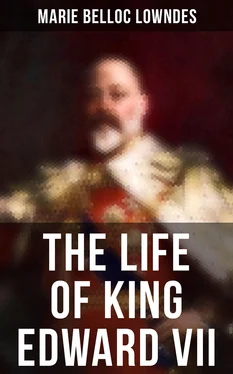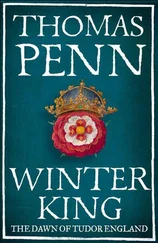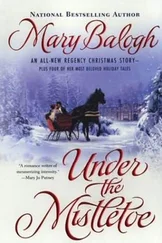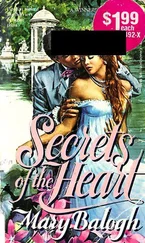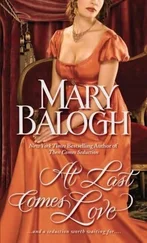Nothing was omitted to make the Prince of Wales’s christening a magnificent and impressive ceremony. There was a full choral service, and a special anthem had been composed by Mr. (afterwards Sir) George Elvey for the occasion. When Prince Albert was told of this, and asked when it should be sung, he answered, “Not at all. No anthem. If the service ends by an anthem, we shall all go out criticising the music. We will have something we all know—something in which we can all join—something devotional. The Hallelujah Chorus; we shall all join in that, with our hearts.” The Hallelujah Chorus ended the ceremony accordingly.
“It is impossible,” wrote Queen Victoria in her Journal , “to describe how beautiful and imposing the effect of the whole scene was in the fine old chapel, with the banners, the music, and the light shining on the altar.” It was significant of the young Queen’s native simplicity that the Prince was only christened Albert, after his father, and Edward, after his grandfather, the Duke of Kent.
Both Queen Victoria and Prince Albert soon showed that they were determined to allow nothing like publicity to come near their nurseries, and the public obtained but few glimpses of the Prince of Wales as a child. Prince Albert’s intimate friend and adviser, Baron Stockmar, wrote a year after his birth to one of his friends:—
“The Prince, although a little plagued with his teeth, is strong upon his legs, with a calm, clear, bright expression of face.” Before he was eighteen months old His Royal Highness had already sat for his portrait several times.
King Edward VII. was barely four months old when Baron Stockmar drew up a very long memorandum on the education of the Royal children. In this document he laid down that the beginning of education must be directed to the regulation of the child’s natural instincts, to give them the right direction, and above all to keep the mind pure. “This,” he went on, “is only to be effected by placing about children only those who are good and pure, who will teach not only by precept but by living example, for children are close observers, and prone to imitate whatever they see or hear, whether good or evil.” In the frankest manner the shrewd old German physician proceeded to point out that the irregularities of three of George III.’s sons—George IV., the Duke of York, and William IV.—had weakened the respect and influence of Royalty in this country, although the nation ultimately forgave them, because, “whatever the faults of those Princes were, they were considered by the public as true English faults ”; whereas the faults of some of their brothers, who had been brought up on the Continent, though not at all worse, were not condoned, owing to the power of national prejudice.
The conclusion at which Baron Stockmar consequently arrived was, “that the education of the Royal infants ought to be from its earliest beginning a truly moral and a truly English one .” It ought therefore to be entrusted from the beginning only to persons who were themselves morally good, intelligent, well informed, and experienced, who should enjoy the full and implicit confidence of the Royal parents. The Baron did not mince matters with regard to “the malignant insinuations, cavillings, and calumnies of ignorant or intriguing people, who are more or less to be found at every Court, and who invariably try to destroy the parents’ confidence in the tutor.”
These principles commended themselves to Queen Victoria and Prince Albert, and Her Majesty wrote the following interesting letter to Lord Melbourne on the subject:—
“Windsor Castle, 24th March 1842 .
“We are much occupied in considering the future management of our nursery establishment, and naturally find considerable difficulties in it. As one of the Queen’s kindest and most impartial friends, the Queen wishes to have Lord Melbourne’s opinion upon it. The present system will not do, and must be changed; and now how it is to be arranged is the great question and difficulty.… Stockmar says, and very justly, that our occupations prevent us from managing these affairs as much our own selves as other parents can, and therefore that we must have some one in whom to place implicit confidence . He says, a lady of rank and title with a sub-governess would be the best. But where to find a person so situated, fit for the place, and, if fit, one who will consent to shut herself up in the nursery, and entirely from society, as she must, if she is really to superintend the whole, and not accept the office, as in my case, Princess Charlotte’s, and my aunts’, merely for title, which would be only a source of annoyance and dispute?
“My fear is, that even if such a woman were to be found, she would consider herself not as only responsible to the Prince and Queen, but more to the country, and nation, and public, and I feel she ought to be responsible only to us , and we to the country and nation. A person of less high rank, the Queen thinks, would be less likely to do that, but would wish to be responsible only to the parents. Naturally, too, we are anxious to have the education as simple and domestic as possible. Then again, a person of lower rank is less likely to be looked up to and obeyed, than one of some name and rank. What does Lord Melbourne think?”
In his reply Lord Melbourne fully concurred in Baron Stockmar’s suggestion that a lady of rank should be appointed, and the choice of the Royal parents fell upon Lady Lyttelton, who had been a lady-in-waiting from 1838, and who appeared to possess the precise qualifications which the post demanded. The daughter of George John, second Earl Spencer, and his wife Lavinia, daughter of the first Earl of Lucan, she was born in 1787, married, in 1813, William Henry, afterwards third Lord Lyttelton, and died in 1870. Lady Lyttelton was installed as governess to the Royal children in April 1842, and discharged her duties with equal ability and devotion. Early in 1851 she laid down her office. Her young charges parted from her with sad hearts and tearful eyes, as Sir Theodore Martin records in the Life of the Prince Consort , while from the Queen and Prince Albert she received marked proofs of the deep gratitude which they felt for all that she had done.
In 1846 King Edward accompanied his parents on two yachting excursions, in August and September, on board the Royal yacht Victoria and Albert . Writing in her Journal on 2nd September, Queen Victoria says, with a pretty touch of maternal pride:—
“After passing the Alderney Race it became quite smooth; and then Bertie put on his sailor’s dress, which was beautifully made by the man on board who makes for our sailors. When he appeared, the officers and sailors, who were all assembled on deck to see him, cheered, and seemed delighted with him.”
Then, when the yacht arrived at Mounts Bay, Cornwall, Her Majesty records on 5th September that “when Bertie showed himself the people shouted ‘Three cheers for the Duke of Cornwall.’”
Again, at Falmouth, on 7th September, the Queen says:—
“The Corporation of Penryn were on board, and very anxious to see ‘The Duke of Cornwall,’ so I stepped out of the pavilion on deck with Bertie, and Lord Palmerston told them that that was ‘The Duke of Cornwall’; and the old Mayor of Penryn said that ‘he hoped he would grow up a blessing to his parents and to his country.’”
At Sunny Corner, just below Truro, the whole population “cheered, and were enchanted when Bertie was held up for them to see. It was a very pretty, gratifying sight.”
Princess Mary of Cambridge, afterwards the much-loved and lamented Duchess of Teck, gives a delightful picture of the Royal children in a letter written in 1847 to Miss Draper, her governess. Princess Mary was then about fourteen, and King Edward was rather more than five years old:—
Читать дальше
